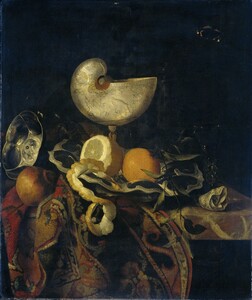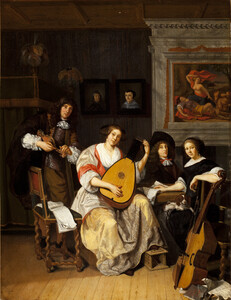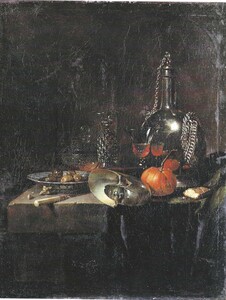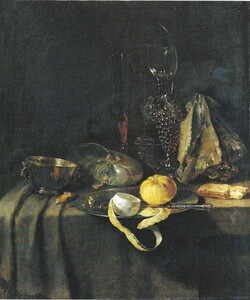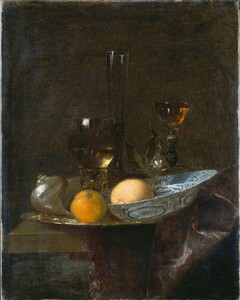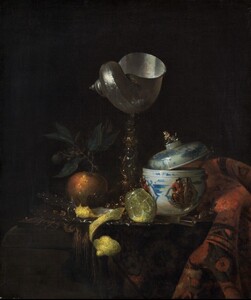14.000 €
An ornate or Pronk still life
Oil on canvas : 82,7 X 67,3 cm
Signed bottom right “F. sant.Acker”
Circa 1660/1670
Frame : 107,7 X 93,3 cm
Provenance : sold at Sotheby’s Amsterdam, 3/05/99 for 72.000 DG = 32.672 €
Our painting is recorded at the RKD, The Hague, under the number 000005798
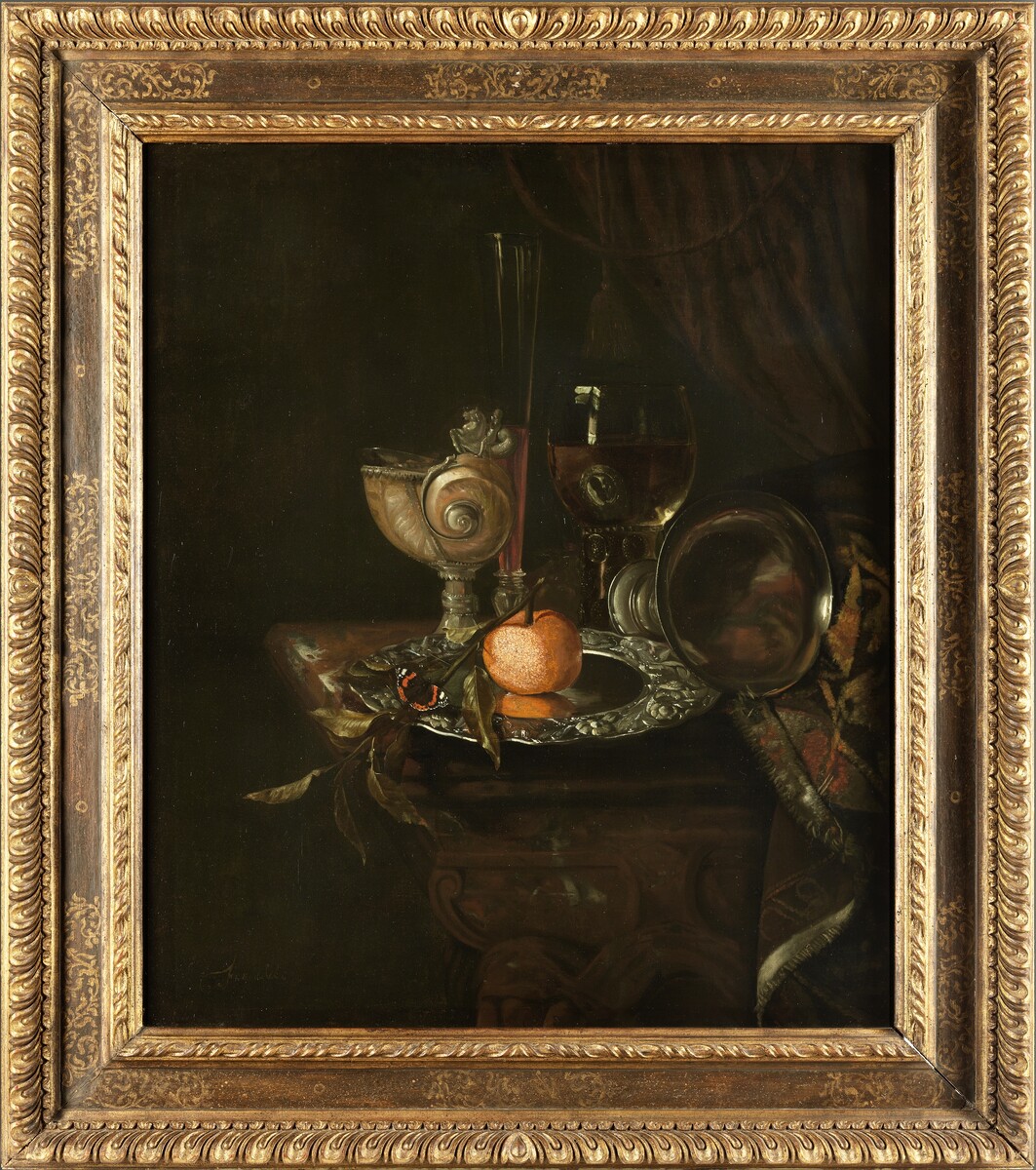
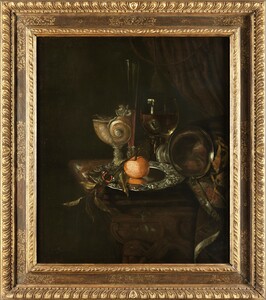
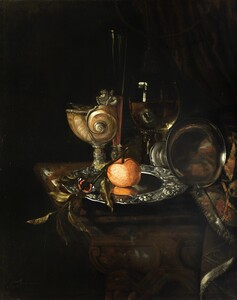
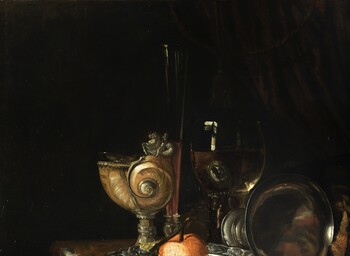
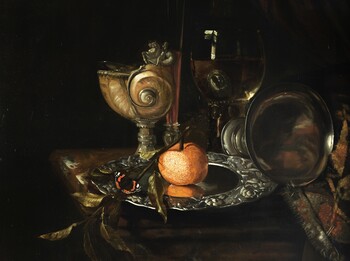
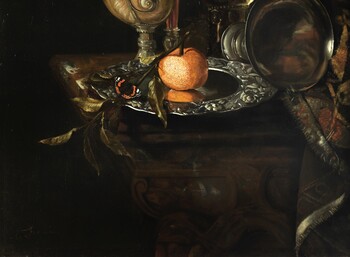
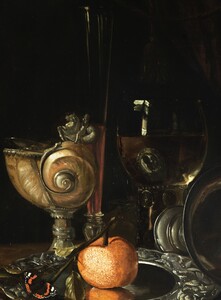
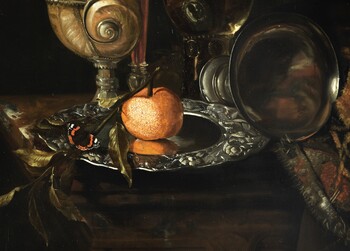
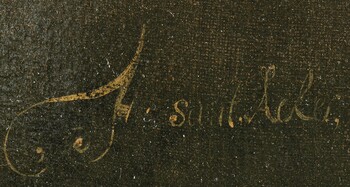
In short
There are only three signed paintings known by our mysterious painter Frans Sant-Acker, who must have worked in ‘s Hertogenbosch (Bois-le-Duc) circa 1648 – 1688: an interior scene and two still-lifes (including ours), that betray the influence of one of the most important Dutch still life painters, Willem Kalf. Kalf specialised in Amsterdam in these rich, ornate “Pronk” still lifes.
About Frans Sant-Acker
Dutch painter
Active in ‘s Hertogenbosch (Bois-le-Duc) 1648 – 1688
There are no biographical details known about our painter.
The only historical mention of “Frans Sanacker” is a record of the Painter’s Guild of Saint Luke in ‘s Hertogenbosch. Our painter paid a two guilder entry fee for the period October 1669 through October 1670. He is also mentioned as having previously paid three guilders, indicating that he might well have joined the guild earlier.
There are only three signed paintings known by our painter:
- Our fully signed still life
- Another fully signed still life from the Stuers collection in Amsterdam, dated 1668
- An interior scene with traces of a signature and date (167.) at the Bredius Museum in The Hague.
About our painting and the influence of Willem Kalf
Sant-Acker has painted on a table ledge an ornate or Pronk still life against a dark background with a curtain at right. At the centre of the composition there is an orange on a silver plate, on its twig there is a butterfly, a red admiral. Behind the orange one sees a large shell (not a nautilus shell) from the Indian Ocean, mounted into a silver cup with a small statue, possibly representing the Abduction of Europe by Zeus, disguised as a bull. Next to it a flute glass with red wine and a Roemer glass holding white wine. The Dutch loved drinking white wine from the valleys of the Rhine and the Moselle in these typical German Roemer glasses, which have stems decorated with prunts to ensure the grip. Next to it a silver goblet and an Oriental tapestry.
Fred Meijer states that both kown still lifes by Sant-Acker were clearly influenced by Willem Kalf. Willem Kalf (Rotterdam 1619 – 1693 Amsterdam) was one of the most important and influential Dutch still life painters of the 17th century. Kalf must probably have studied under Hendrick Martensz. Sorgh in Rotterdam. From circa 1640/1642 to 1645 he lived in Paris, where he was successful with his farm interiors holding still life elements and with his ornate, so-called Pronk still lifes. Kalf returned to Holland in 1645 or 1646. He settled first in his native Rotterdam, got married in Hoorn in 1651 and lived in Amsterdam since at last 1653. Kalf stayed in Amsterdam, where he was very successful, until his death forty years later in 1693.
The influence of Kalf can be seen in our still life in the dark background (which Kalf borrowed from Simon Luttichuys) against which the strong colours of the orange contrast. Typical of Kalf is also the Oriental, Persian tapestry covering part of the table.
Why should you buy this painting?
Because it is a nice and fully signed example of a Pronk still life by a very rare painter.

